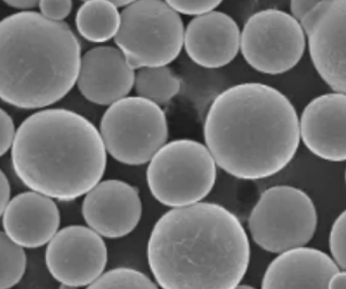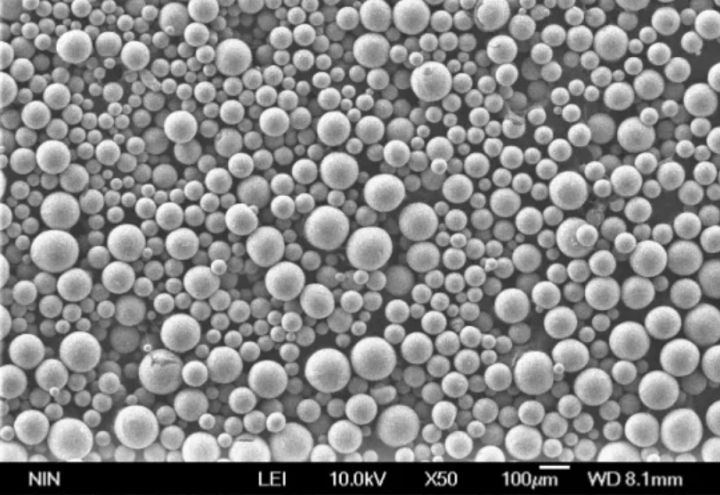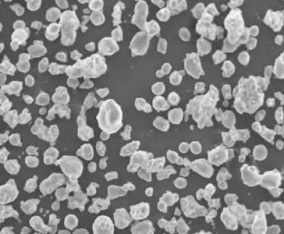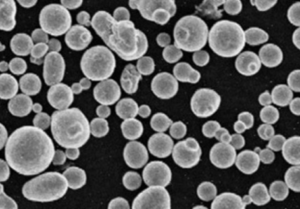Inconel 625 é uma liga de níquel-cromo-molibdênio com excelente resistência à corrosão e à oxidação em altas temperaturas. Este guia oferece uma visão abrangente das propriedades, aplicações, especificações, graus, fornecedores e prós e contras do Inconel 625.
Visão geral do Inconel 625
O Inconel 625 é uma superliga à base de níquel reforçada por solução sólida. Principais recursos:
- Excelente resistência à corrosão, resistência à oxidação e resistência a altas temperaturas
- Mantém alta resistência à tração e propriedades de ruptura por fluência até 700°C (1300°F)
- Suporta uma ampla gama de ambientes severamente corrosivos e de alta tensão - Usado para aplicações como processamento químico, aeroespacial, marítimo e tratamento térmico
Sua composição exclusiva permite um desempenho excepcional em condições exigentes.
Composição e propriedades do Inconel 625
Os principais elementos de liga do Inconel 625 proporcionam suas propriedades distintas:
Composição do Inconel 625
| Elemento | Peso % |
|---|---|
| Níquel | 58,0 min |
| Cromo | 20.0-23.0 |
| Molibdênio | 8.0-10.0 |
| Nióbio | 3.15-4.15 |
| Ferro | 5,0 máximo |
| Cobalto | 1,0 máximo |
Inconel 625 Propriedades
- Excelente resistência à tração, à fadiga, à fluência e à ruptura em altas temperaturas de até 1300°F
- Resiste a uma ampla gama de ambientes corrosivos e ácidos
- Boa resistência à oxidação até 2150°F
- Altamente soldável para facilitar a fabricação
- Boa usinabilidade em comparação com outras ligas de níquel
- Não magnético
O equilíbrio de níquel, cromo e molibdênio confere ao Inconel 625 a combinação exclusiva de força, resistência à corrosão e facilidade de fabricação.
Aplicativos de Inconel 625
Os principais setores que utilizam o Inconel 625 incluem:
Aplicações do Inconel 625
| Setor | Usos |
|---|---|
| Aeroespacial | Sistemas de exaustão, sistemas de reversão de empuxo, dutos, latas de combustão, grampos de hangar |
| Processamento químico | Trocadores de calor, válvulas, tubulações, condensadores, vasos de reação |
| Marinha | Eixos de hélice, fixadores marítimos, equipamentos de sonar |
| Petróleo e gás | Equipamentos de cabeça de poço, tubulação de fundo de poço, válvulas, componentes submarinos |
| Controle da poluição | Depuradores, precipitadores, chaminés, chaminés, dutos |
| Alimentos/Farmacêutica | Tubulação, tubulação de transferência, válvulas, equipamento de processamento |
A força, a resistência à corrosão e o desempenho em altas temperaturas do Inconel 625 o tornam ideal para ambientes exigentes em todos os setores.

Especificações e classificações
O Inconel 625 está disponível em várias formas de produtos e atende às especificações internacionais:
Especificações do Inconel 625
| Especificação | Grau | Descrição |
|---|---|---|
| AMS 5599 | Recozido | Chapas, tiras e placas recozidas |
| AMS 5666 | Solução recozida | Barra, fio e material de forjamento de superligas recozidas em solução |
| AMS 5837 | Recozido e envelhecido | Tubos sem costura e soldados recozidos |
| AMS 5879 | Solução tratada | Folha e tira tratadas com solução |
| AMS 5891 | Endurecido por precipitação | Barras, material de forjamento e fios tratados por solução e precipitação |
Formulários de produtos Inconel 625
- Folha - De 0,406 mm a 6,35 mm de espessura
- Placa - Espessura de até 152 mm
- Bar - Círculos, quadrados, retângulos e hexágonos
- Tubo - Sem costura e com solda
- Tubo - Sem costura e com solda
- Estoque para forjamento - Arredondamentos, blocos, eixos
- Fio - Recozido, envelhecido ou trabalhado a frio
O Inconel 625 é produzido em todas as formas comuns de produtos forjados para diversas aplicações.
Fornecedores e preços
O Inconel 625 está disponível nos principais fornecedores de ligas:
Fornecedores de Inconel 625
| Fornecedor | Descrição |
|---|---|
| Haynes International | Fabricante global de ligas de níquel. Linha completa de produtos Inconel 625. |
| Corporação de Metais Especiais | Produz Inconel 625 em formas forjadas. Distribuição mundial. |
| Metais Aalco | Estoque de placas, chapas, barras, tubos, conexões e flanges de Inconel 625. |
| Goodfellow | Pesquisa e ligas especializadas. Fornecedor de pequenas quantidades de Inconel 625. |
| Ligas de águia | Amplo estoque de placas, chapas, barras e tubos de Inconel 625. |
Preços do Inconel 625
Por ser uma liga premium, o Inconel 625 tem um custo mais alto do que o aço carbono ou o aço inoxidável:
- Placa Inconel 625: $55 - $65 por kg
- Chapa de Inconel 625: $50 - $60 por kg
- Barra de Inconel 625: $45 - $55 por kg
- Tubo Inconel 625: $65 - $75 por kg
Os preços podem variar de acordo com a quantidade, a forma do produto, a bitola/espessura, o fornecedor e a região geográfica.
Comparação com o aço inoxidável
Embora mais caro, Inconel 625 oferece grandes vantagens em relação ao aço inoxidável:
| Parâmetro | Inconel 625 | Aço inoxidável |
|---|---|---|
| Resistência a altas temperaturas | Excelente - mantém a resistência até 1300°F | Razoável - a resistência diminui acima de 600°F |
| Resistência à corrosão | Superior - resiste a uma ampla gama de ácidos, ligas e sais | Moderado - propenso a corrosão por pites e fendas |
| Custo | 2x a 5x mais caro | Menor custo de material |
| Fabricação | Boa soldabilidade e usinagem | Mais fácil de soldar e usinar |
| Endurecimento do trabalho | Baixas taxas de endurecimento por trabalho | Endurecimento severo por trabalho excessivo |
| Permeabilidade magnética | Não magnético | Os graus martensítico e ferrítico são magnéticos |
Para aplicações críticas, o Inconel 625 oferece desempenho superior, apesar do custo mais alto. O aço inoxidável é mais econômico para usos menos exigentes.
Prós e contras dos aplicativos
| Aplicativo | Prós do Inconel 625 | Possíveis contras |
|---|---|---|
| Trocadores de calor de alta temperatura | Resiste à corrosão e à oxidação em temperaturas extremas | O custo é muito maior do que o do aço inoxidável |
| Equipamento de processamento químico | Resiste a quase todos os compostos de cloro úmidos e secos | Difícil de cortar ou usinar seções grossas |
| Componentes de escapamento aeroespaciais | Mantém a resistência no ambiente quente dos gases de escape | Requer endurecimento por envelhecimento para obter propriedades ideais |
| Componentes submarinos de petróleo e gás | Excepcional resistência à corrosão e à erosão causadas pela água do mar | Susceptível a rachaduras por corrosão sob tensão acima de 500°F |
| Tubulação para alimentos/farmacêutica | Evita a contaminação metálica dos produtos | Baixa condutividade térmica em comparação com as ligas de cobre |
O Inconel 625 oferece desempenho inigualável em ambientes adversos, apesar do custo mais alto e dos desafios de fabricação.

Perguntas frequentes
Para que é usado o Inconel 625?
Os principais usos do Inconel 625 são em trocadores de calor, equipamentos de processamento químico e de alimentos, sistemas de exaustão e emissão, componentes submarinos de petróleo e gás, dutos aeroespaciais e peças de motor. Ele resiste a temperaturas extremas e à corrosão.
O Inconel 625 é soldável?
Sim, o Inconel 625 pode ser prontamente soldado usando os métodos GTAW e GMAW. Técnicas adequadas devem ser seguidas para evitar rachaduras na solda. O recozimento pós-soldagem melhora a ductilidade e a resistência.
Qual é a diferença entre o Inconel 600 e o 625?
O Inconel 625 tem maior teor de molibdênio para aumentar a resistência à corrosão e a força em altas temperaturas em comparação com o Inconel 600. O Inconel 600 é mais resistente à oxidação acima de 1.000°C.
Qual é o ponto de fusão do Inconel 625?
A faixa de fusão do Inconel 625 é de 2290-2460°F (1260-1350°C). Ele mantém uma resistência significativa até 1300°F.
O Inconel 625 é adequado para aplicações marítimas?
Sim, a resistência do Inconel 625 à corrosão pela água do mar o torna adequado para componentes marítimos, como eixos de hélice, fixadores e equipamentos de sonar. Ele também tem boa resistência à erosão por cavitação.
Qual é a densidade do Inconel 625?
O Inconel 625 tem uma densidade de 8,44 g/cm3, que é um pouco maior que a do aço inoxidável. O teor de níquel e molibdênio aumenta sua densidade.
As propriedades impressionantes do Inconel 625 fazem dele a melhor opção para aplicações exigentes, apesar do custo mais alto. A seleção adequada garante que ele ofereça o máximo de desempenho e valor.
Conclusão
Com sua liga de níquel-cromo-molibdênio cuidadosamente equilibrada, o Inconel 625 oferece uma combinação inigualável de alta resistência, excelente resistência à corrosão e facilidade de fabricação. Apresenta bom desempenho desde temperaturas criogênicas até 1300°F, mesmo nos ambientes mais agressivos. As principais aplicações nos setores aeroespacial, de processamento químico, de petróleo e gás, entre outros, contam com os recursos do Inconel 625. Embora mais caro do que os aços inoxidáveis, seu desempenho superior o torna um excelente investimento para componentes e sistemas críticos. O Inconel 625 tornou-se uma superliga confiável e amplamente utilizada graças às suas características excepcionais.

